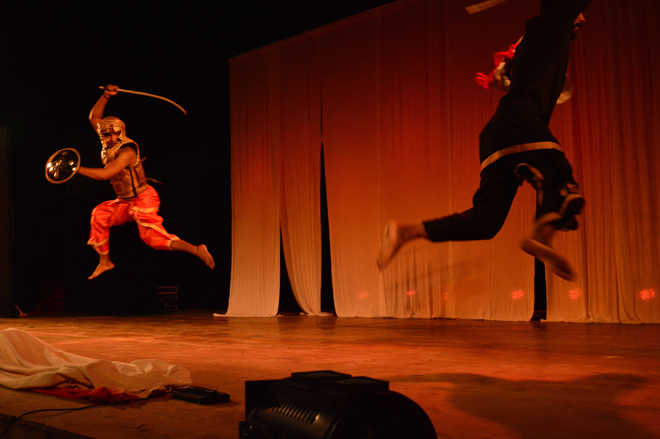Mahabharata for our times
Swati Rai
Indian mythology has often taken to the stage — from Ram Lila in the small towns and villages to Peter Brook’s celebrated and seminal interpretation of Mahabharata. Here is another one, but this one has been told through puppets. Puppeteer Anurupa Roy’s Mahabharata is a co-production of her Delhi-based collective Kat Katha and Festival Mondial Des Marionettes Charleville Mezeires, where the show will premiere in September this year.
This performance with life-size puppets, masks and shadow puppets looks at the Mahabharata as a dynamic narrative, which has evolved over the last few centuries through the sung verses of Togalu Gombeyatta’s Sillakeyata Mahabharata and remains relevant in the new search of contemporary puppeteers.
Anurupa’s Mahabharata explores the inner dilemmas of 15 characters in the play through a stream of narratives of their past and present motives. It wonders if each character’s single-minded and unquestioning loyalty to one belief system lead to the inevitable conflict… Was there ever a moment when each of these characters could have averted war by choosing differently? Or is one doomed to make the same choices eternally?”
“Human beings are born for peace. They like to grow up in peace. They like to raise their children in peace, and they like to say goodbye to this beautiful life in peace. Then why are we always preparing for war? This, well, is the central dilemma of the Mahabharata. When each person traps himself within one motive and his version of status quo, we primed to kill and die… When the characters of the Mahabharata begin to wage their personal wars, closing themselves to the consequences of their actions, things snowball into an apocalypse,” she points.
For each character in the production, there is a different mask or a puppet representing a certain aspect of the character. “For example, Yuddhistra’s character has an additional head and arms attached to him, which seem to be ruling and manipulating his actions in the gambling scene,” Anurupa says, adding that the audience is open to interpret the characters as it deems fit. She also says that the characterisation and internal goings on in the scene make it possible to portray the characters in shades of grey and not in black and white.
Of the work’s relevance, she says: “The story itself is increasingly relevant in the polarised and conflict-ridden world of today. The characters then become archetypes for conflicts small and large, whether in world politics or the family or community. The narrative, as such, becomes an over-arching metaphor for many political, institutional and social situations in the world today.”
Anurupa says the central question in this presentation is what could have averted the apocalyptic war of the Mahabharata… The answer lies within, doesn’t it?
Puppeteer’s journey
Anurupa Roy, a puppeteer, puppet designer and director of puppet theatre started while still in school. It turned into a serious engagement in college where she performed as part of the dramatics society, on themes, ideas and topics that catered to grown-ups. “That was my first sensitisation to the fact that puppetry as an art can cater to adult themes and issues. Till then it was a rampant stereotype that puppetry is, one, not a serious form of art and, two, it is meant to be performed in the traditional form of puppets pulled with strings.
However, her views on puppetry are inclusive and organic. She considers multi-media puppetry — that includes the use of plastic, human-size puppets, thermocol, masks figures and other materials all rolled into performing arts — as against ‘pulling strings’ literally!
Career in puppetry?
Anurupa says that it is only in the past decade that puppetry has emerged as a serious form of art in India and a lucrative career. Her collective, Kat Katha, in Delhi is replete with a mini library of puppetry related videos and a facility to watch puppetry theatre performances and has internship and residency programmes in place. She is hopeful that puppetry will finally get a contemporary recognition while keeping puppetry’s rich traditions alive.









